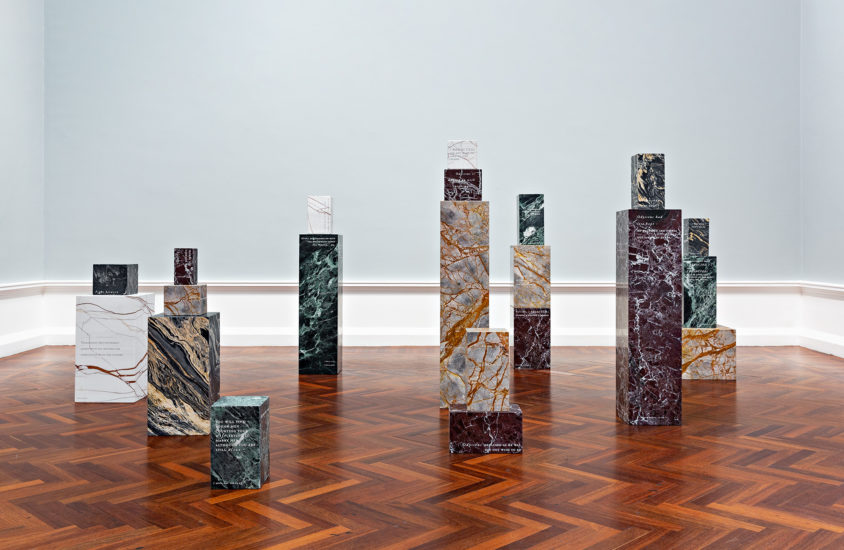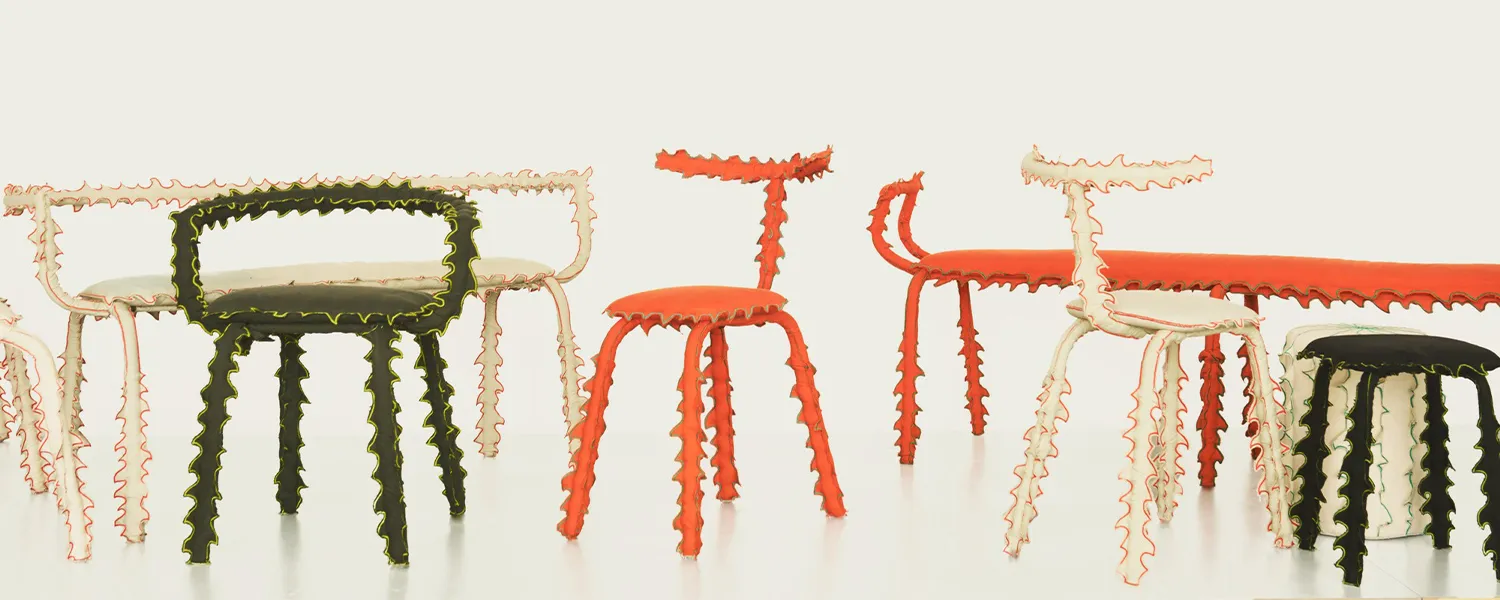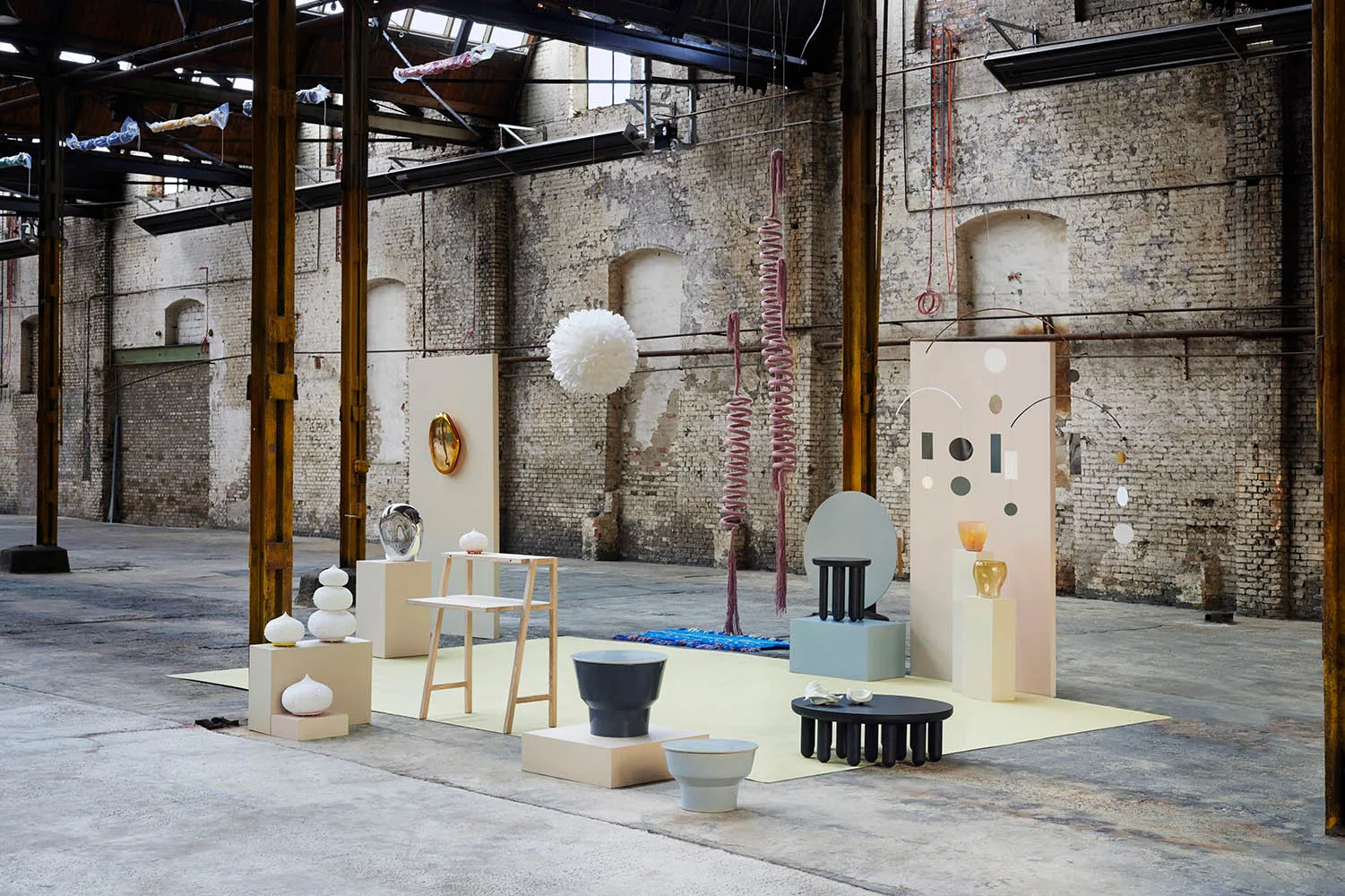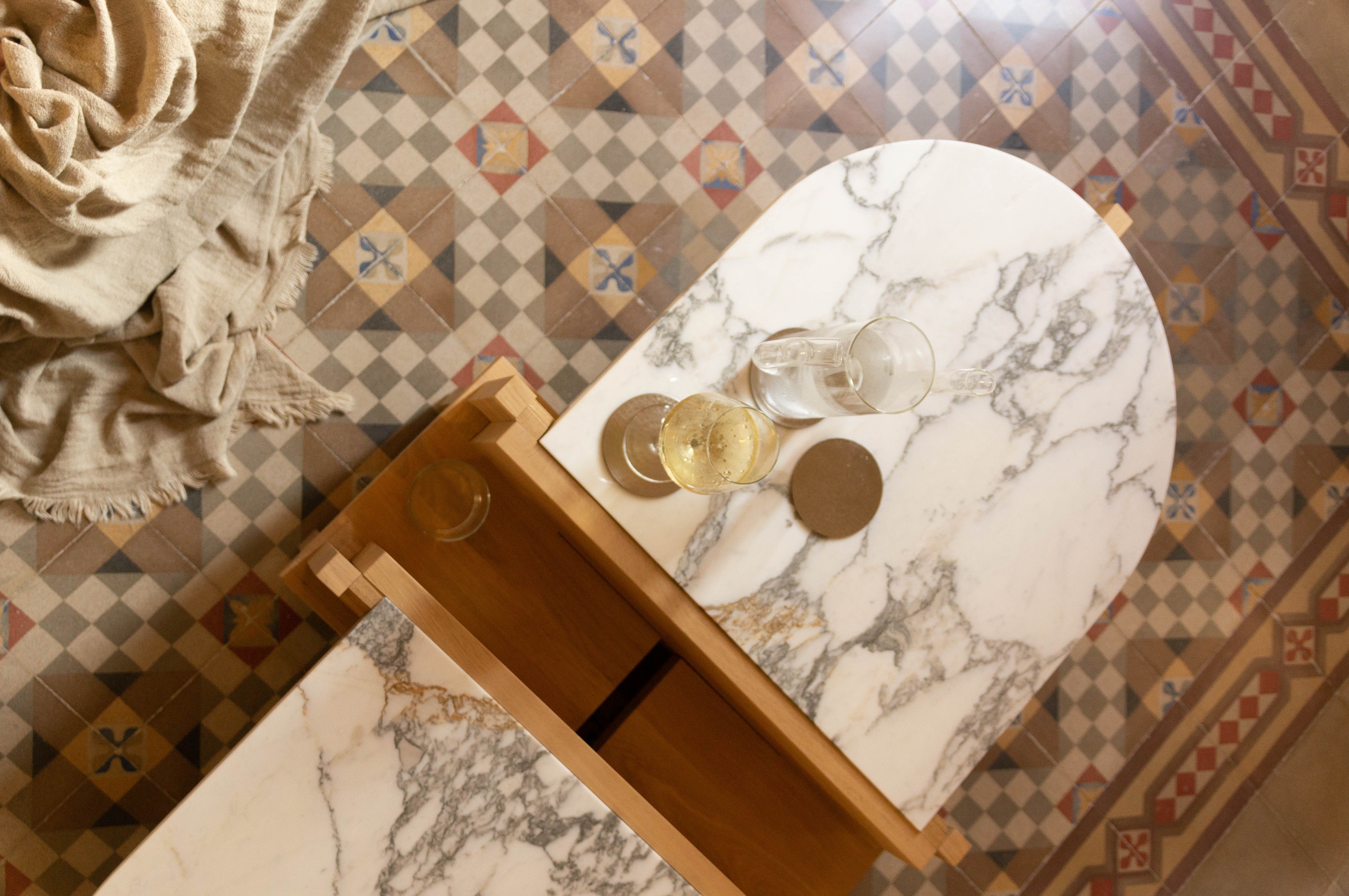
Marvelous Marble: A Timeless Material’s Legacy and Modern Challenges
There are materials, materials that matter and those, which make an impression. Since Ancient times marble has been used for its easy-to-carve composition, its natural extravaganza and splendor. There are no two blocks alike, each stone is unique as it is formed through centuries of geological compressions. Even when whole cities and civilizations vanished, marble columns and statues remained, witnessing the traces of time.
Natural marble is an extremely rare resource. Marble, quartz and granite take centuries to form. Limestone and dolomite rocks go through natural metamorphosis caused by variable recrystallization in the original mineral grains. The characteristic unique colors and specific marks in the stone result from impurities in the bedrock such as iron oxides and mineralisations. When heated they create delicate lines and veins, forming an imprint of Earth’s beating heart.
It is not only the durability of the material that intrigued makers and commissioners alike, for its uniqueness it was the choice for those who wanted to leave a mark in the history timeline. The most notorious examples in terms of fine art with which we associate marble today were made during the Classical Greek period (500-366 BC). However this material was widely used already in Ancient Egypt and Mesopotamia mostly for the creation of small stylised figurines of animal and anthropomorphic origin. These statues were mainly flat and moderate in size.
In Ancient Greece, for the first time, human features reached Godly appearance. This was achieved through an astonishing level in detail and the idealization of the human body in marble statues. The ancient masters showed their skillfulness not only in the meticulous representations of the anatomy, but also in the tedious executions of draperies and fabrics through intricate carvings. Materials and forms were so realistically carved out as to express movement and human emotion.
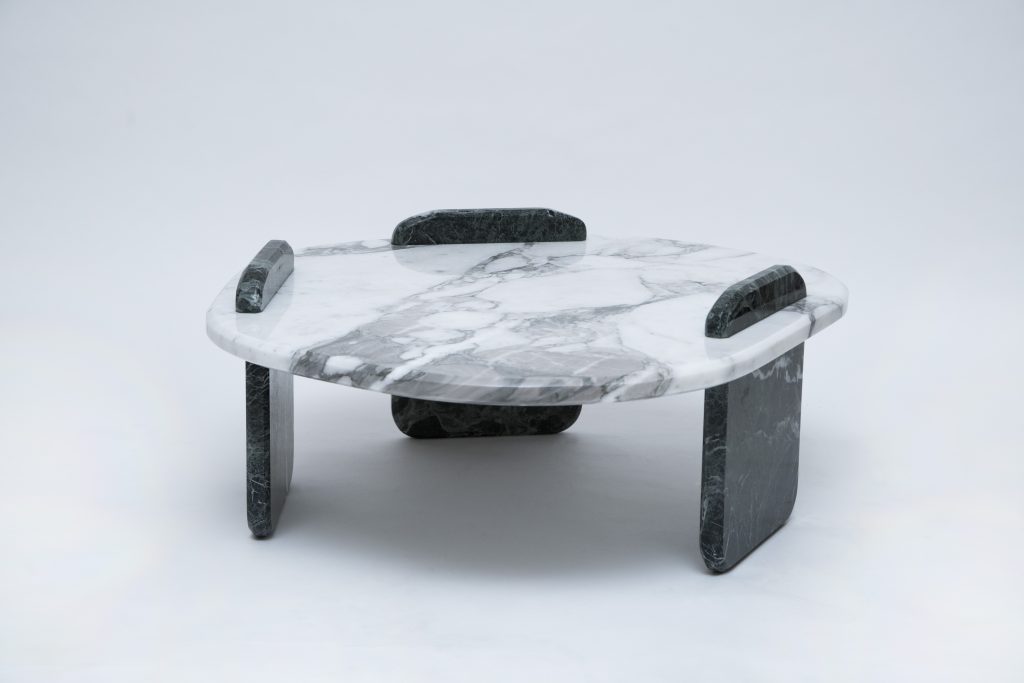

It was in Italy, though, where masters such as Michelangelo and Donatello created the most exquisite sculptures known to mankind, taking advantage of the existence of local quarries, such as the famous Carrara quarries, known for more than 2000 years. Meanwhile, the countries of the Northern Renaissance who did not have immediate access to the precious material, used mainly ivory and wood in the making of statues and silhouettes.
But why are contemporary artists and designers still so attracted to marble? Since time immemorial, marble has been associated with luxury and uniqueness, as no two blocks are identical. In contemporary art and limited edition design using unique marble blocks offers the possibility to create truly exceptional works. As these works are unique or in very limited series one may argue that they do not envision such a harmful effect on nature.
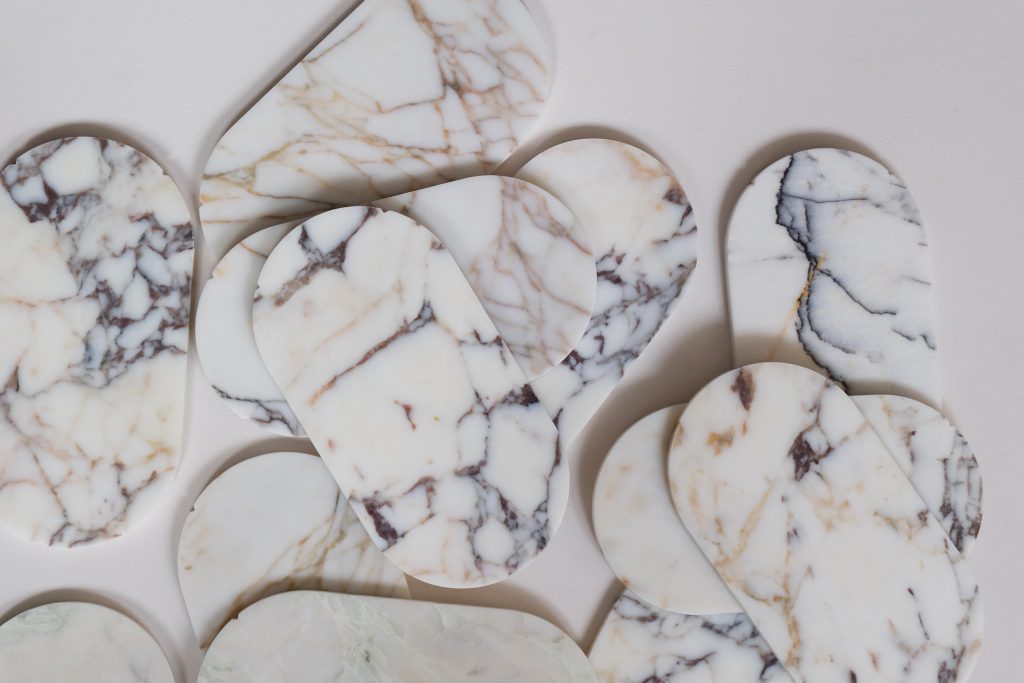

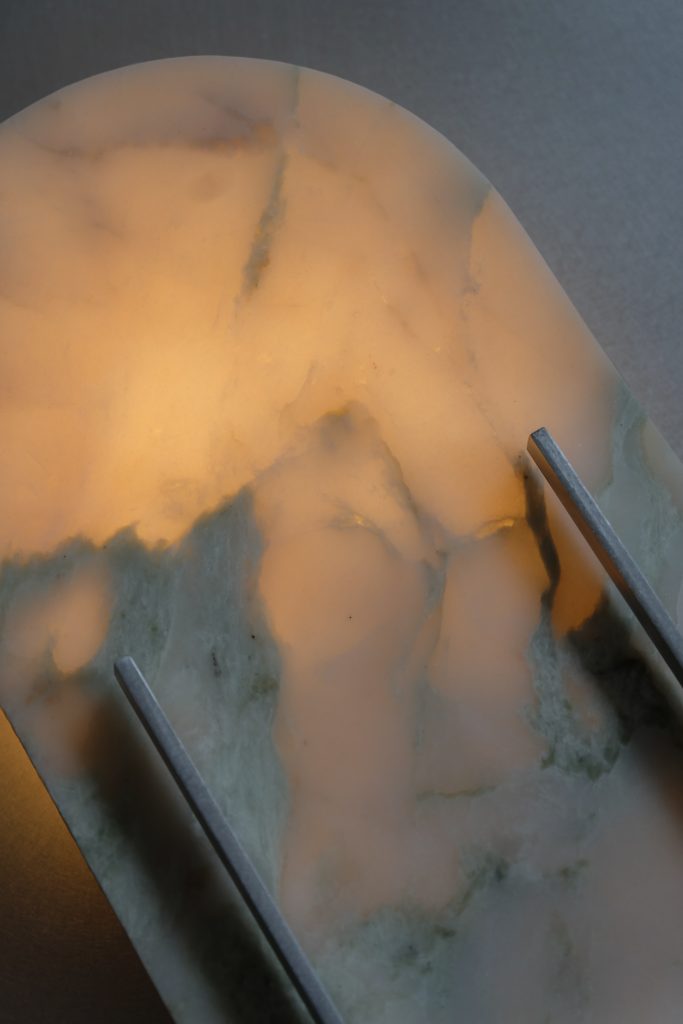

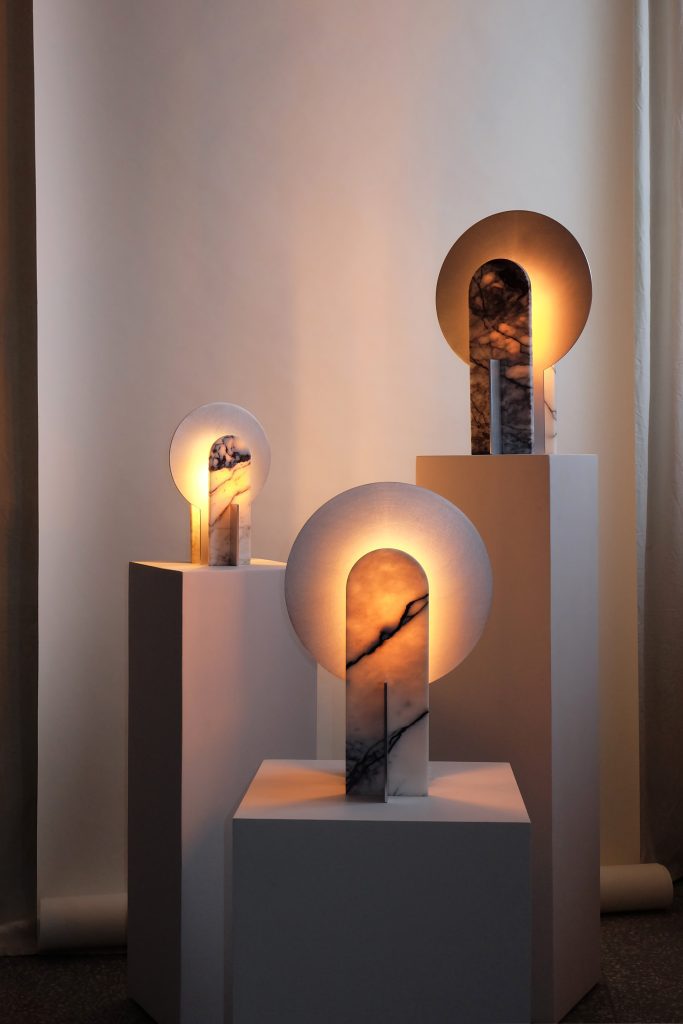

However, the use of marble in construction and interior design, with its mere scale, offers no sustainable, nor fair solution. The working conditions in the queries are one side of the coin, what is even more bothersome are the high transportation costs of moving huge blocks around the globe and the huge amount of water needed for the production processes in the quarries.
During the pandemic, when we were confined to our homes, the demand for decorative materials grew stronger as people suddenly had more time to spend at their homes. The post pandemic world seems to be no different – we have started flying like mad cows, the art market has gone back to the art fair craziness, the thirst for luxury goods seems to be expanding with more and more millennial millionaires ahead. To stay on the bright side, we – the consumers – should make conscious decisions and try to act responsibly towards the future.
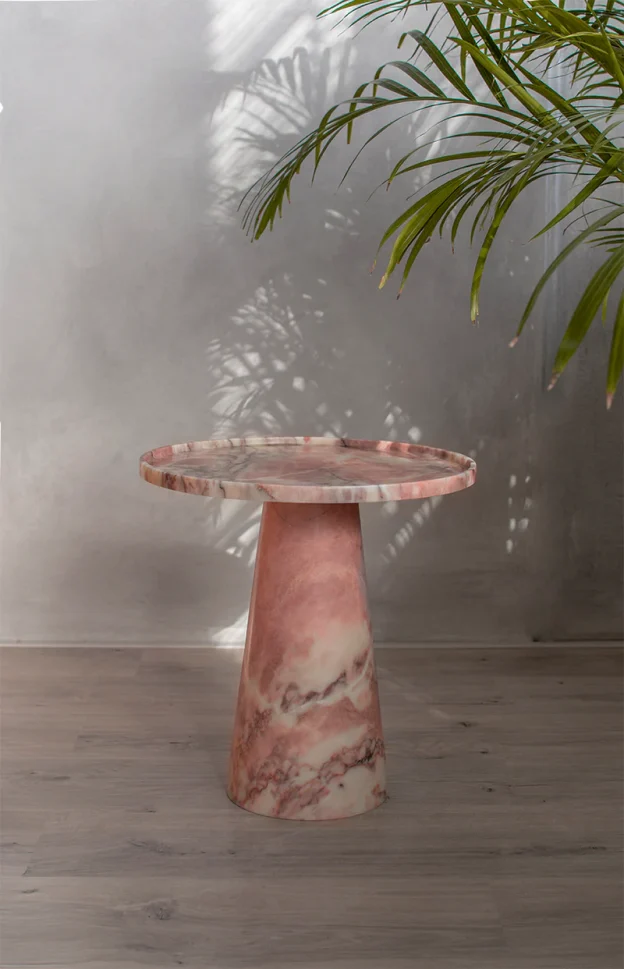



Among contemporary marble-based studios who are committed to working with marble more sustainably, ADORNO is proud to collaborate with several. Panorammma Atelier, rooted in Mexican geological specificity, grapples with the ethical complexities of material sourcing, expanding their practice to include industrial slag and synthetic alternatives that challenge ideas of authenticity and ecological responsibility. In parallel, Millim Studio takes an archaeological approach to discarded Roman workshop fragments, reframing conventional distinctions between “waste” and “value.” Their work reveals extraordinary beauty in overlooked remnants and questions the pursuit of perfection in luxury materials.
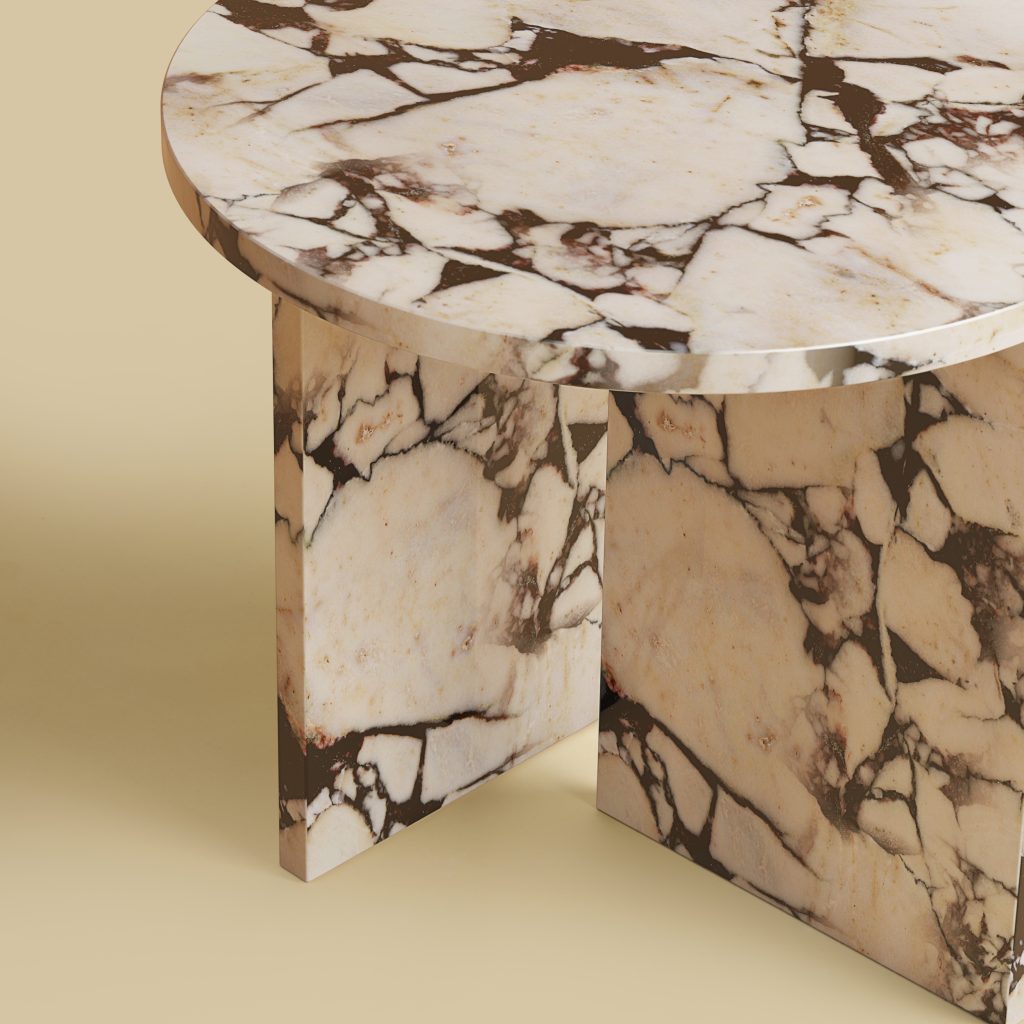

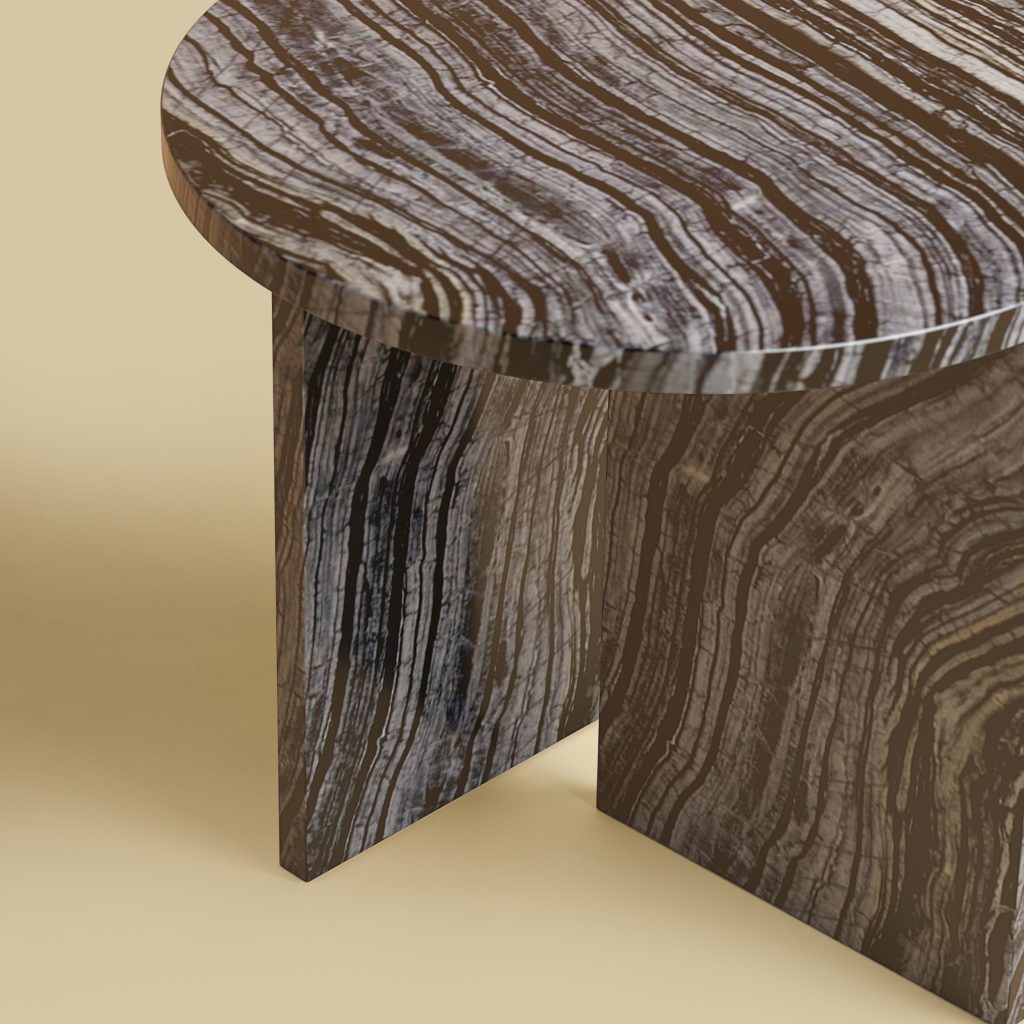

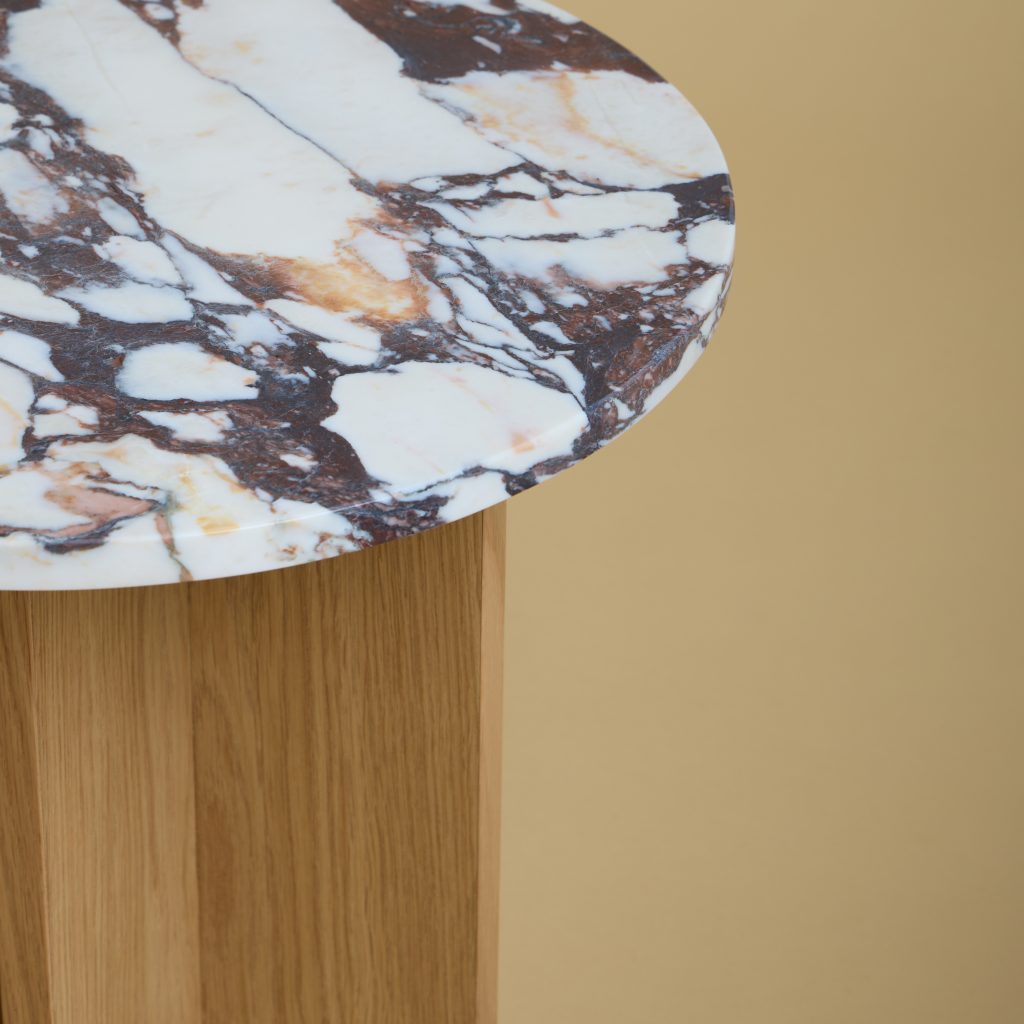

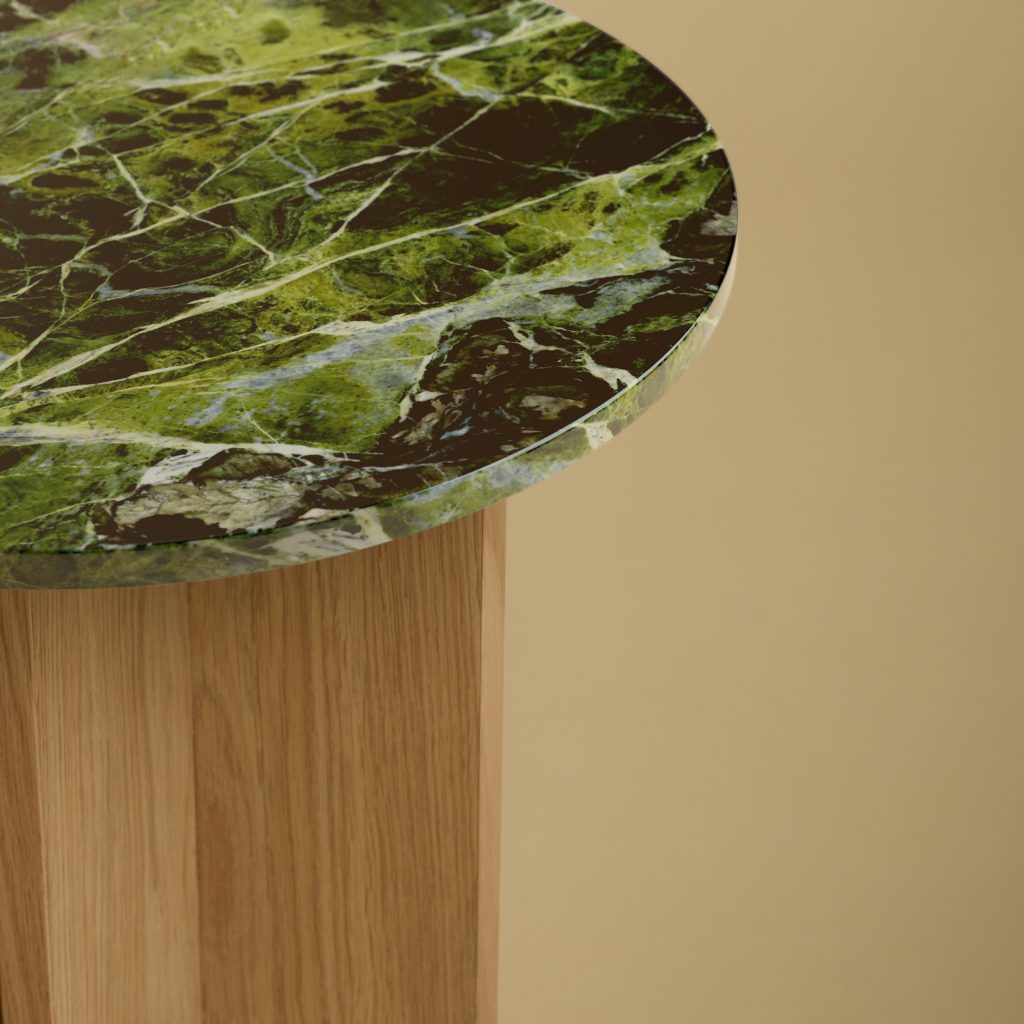

If we consider that fine art and limited edition design offer exquisite works in very limited or even unique editions we may argue that using a bit of marble does not harm anybody. In fashion faux-leather has nearly substituted the use of animal skin, at least this is what we want to believe. But what is happening in construction and design? Has the time for alternatives to natural stone arrived?
Below I offer a list of makers who embellish our world with their marvelous marble creations, with a particular attention to how the material can be sustainably approached. I leave the question whether we should deploy natural materials to the designers and architects to decide, and to the readers to assess whether the works shown below are worth the pain of using these precious darlings?
Oskar de Roover
Based in Belgium, Oskar de Roover practices narrative salvage, working exclusively with reclaimed marble from architectural elements and transport-damaged fragments. His design philosophy centers on minimal intervention—developing mechanical, reversible connections that alter stone as little as possible while creating new functional contexts. This approach honors marble’s previous lives while extending its utility through thoughtful reconfiguration rather than dramatic transformation.
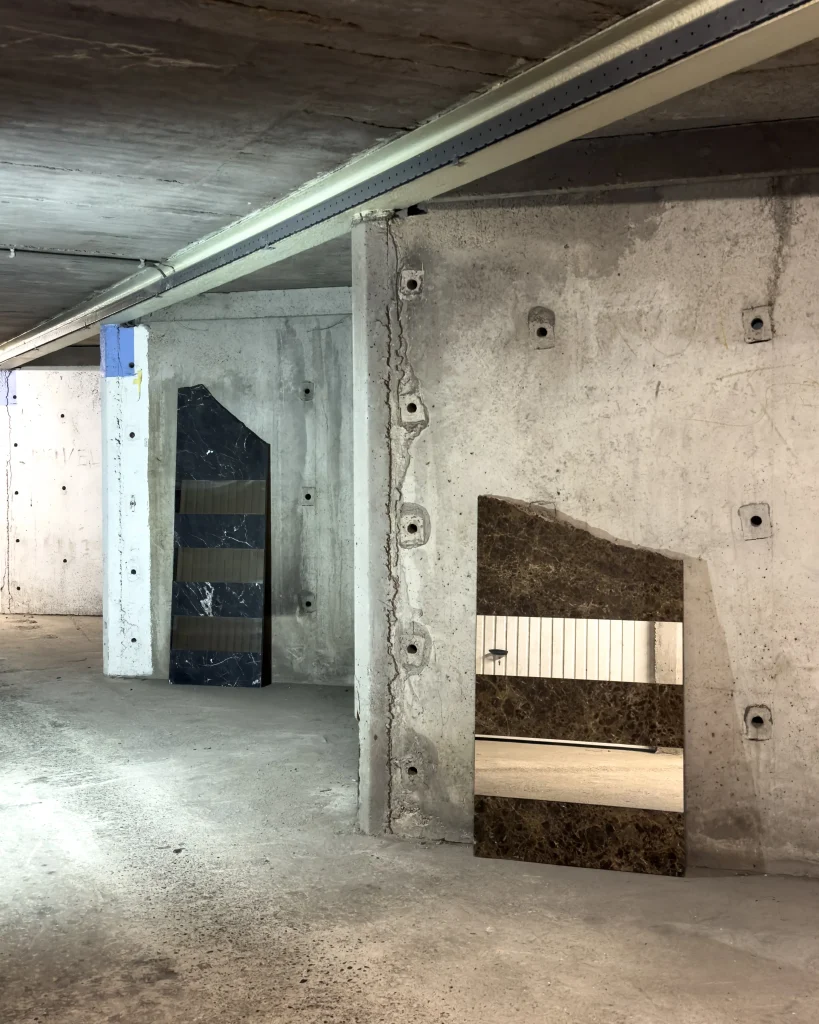



Studio Ayres
Created by Karim Molina in Mexico, Studio Ayres embraces material scarcity as creative direction rather than limitation. The studio works exclusively with Mexican and Guatemalan marble, allowing available stone to dictate design possibilities—creating limited editions when particular varieties cannot be consistently sourced. This inverts conventional design hierarchies, positioning the material itself as the primary creative agent rather than imposing predetermined forms upon static stone.
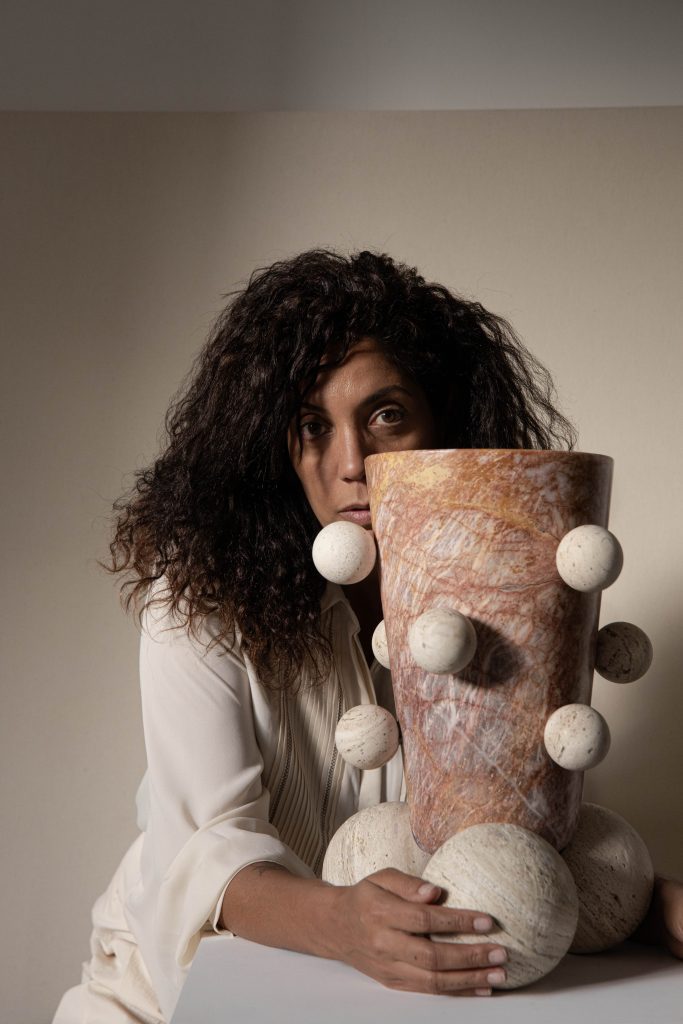

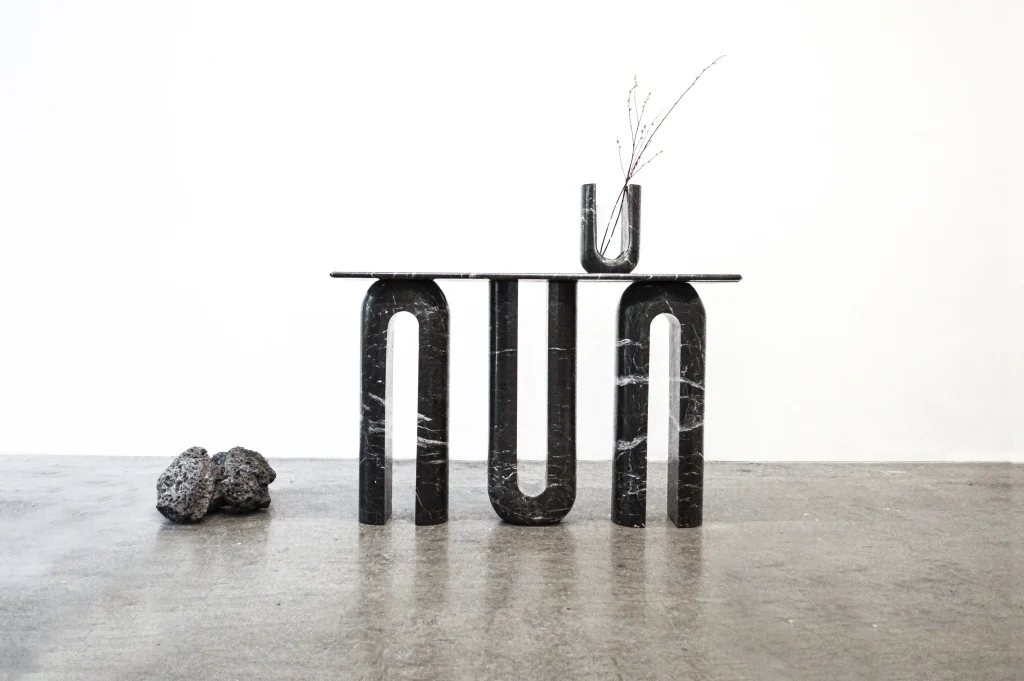

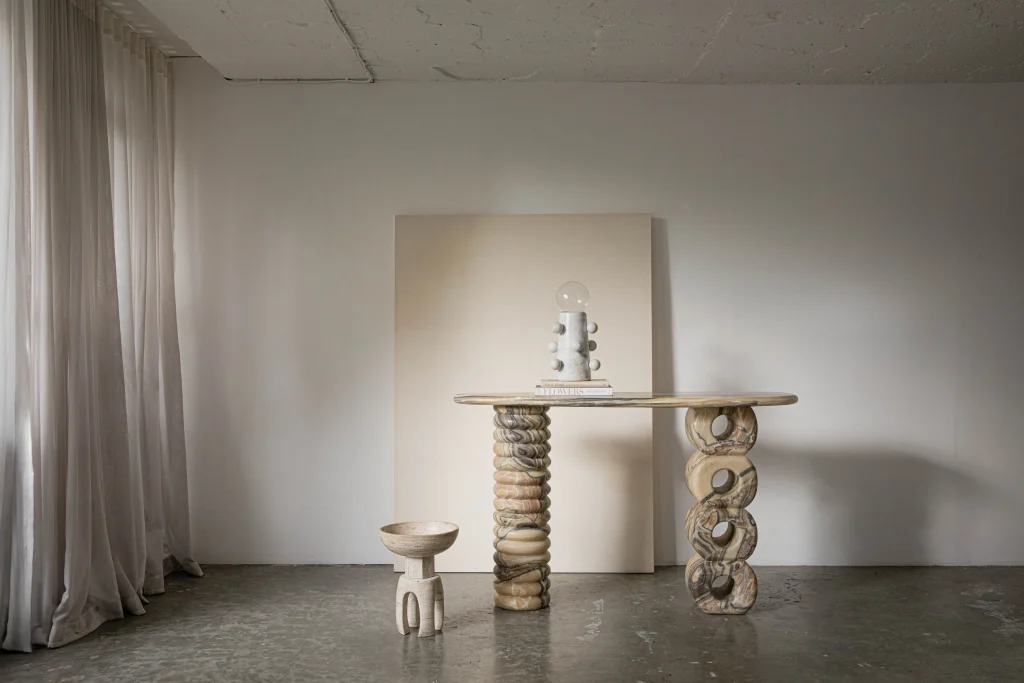

BERENICE CURT ARCHITECTURE
Bérénice Curt transforms marble waste into sophisticated design through systematic material reconfiguration. Her “Testa dei Marmi” and “Tavole dei Marmi” collections standardize 3×4 cm sections cut from quarry offcuts, developing adaptable systems that accommodate material variability rather than requiring uniformity. Curt’s practice extends to using single marble slabs across multiple elements within projects—countertops, lamps, shelving—creating material continuity while eliminating waste.
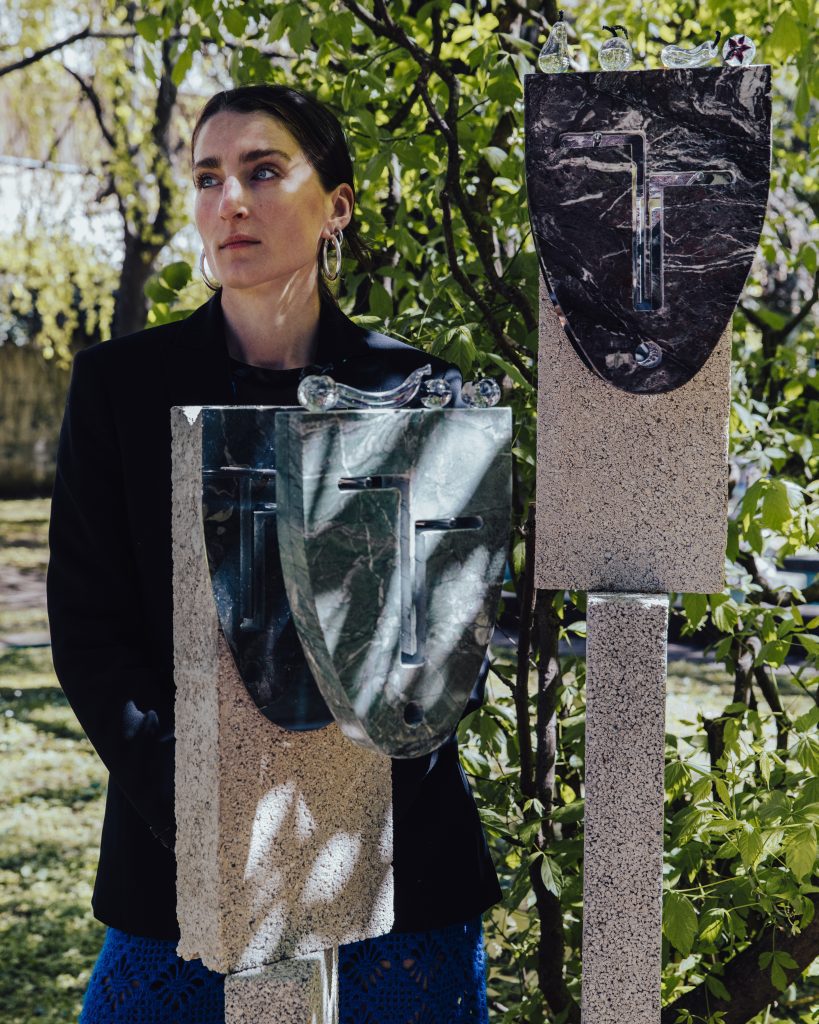

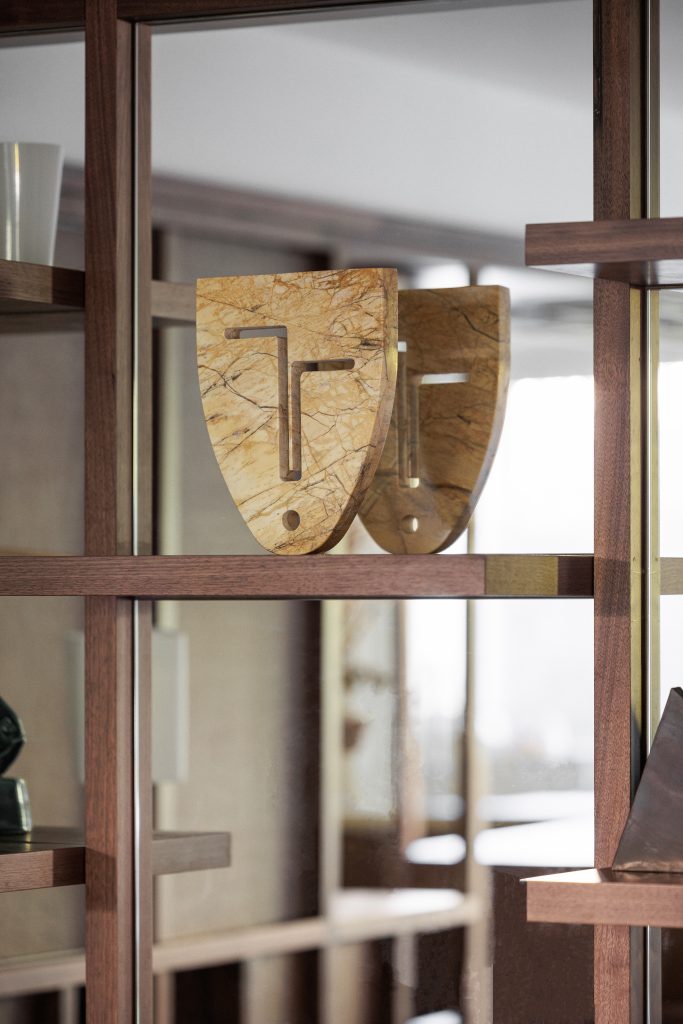

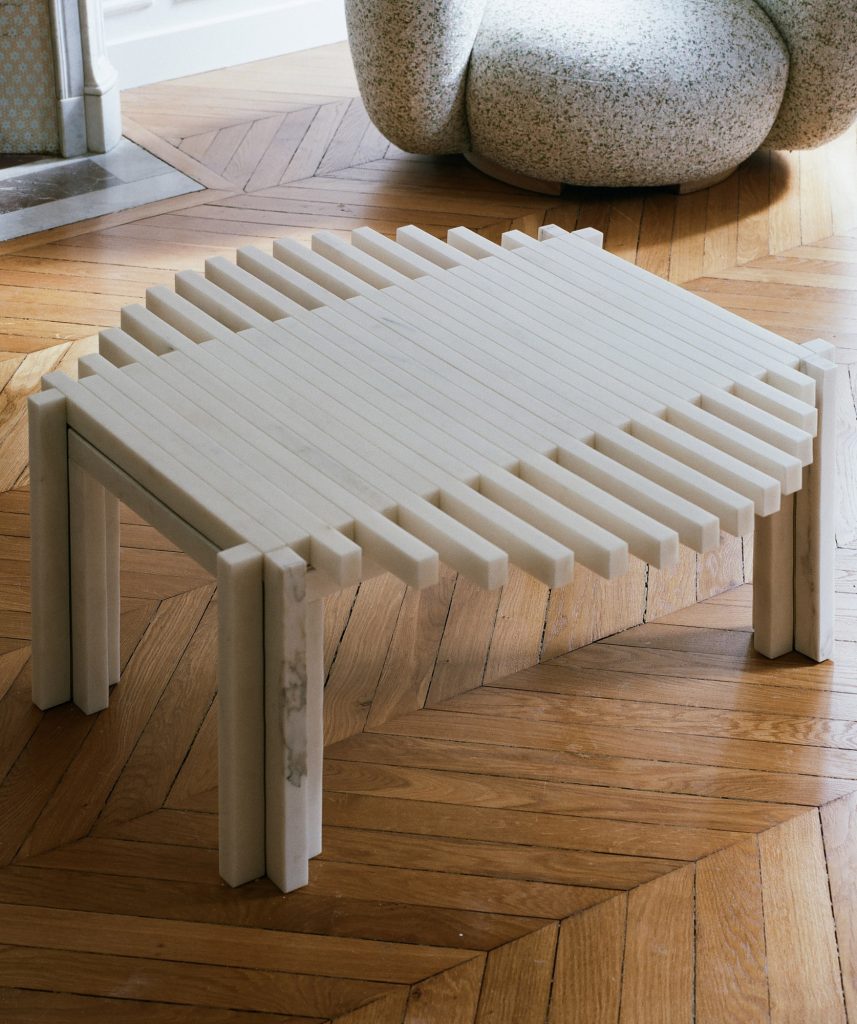

Panorammma Atelier
Another Mexican-based studio, Panorammma Atelier approaches sustainability through ethical sourcing considerations, abandoning certain Mexican quarries despite their beautiful stone due to connections with organized crime. This principled stance has led Maika Palazuelos toward material alternatives, incorporating industrial slag—a technical glass byproduct—into works like “Conjoined Mirrors” that engage with material authenticity while addressing ethical supply chain concerns.
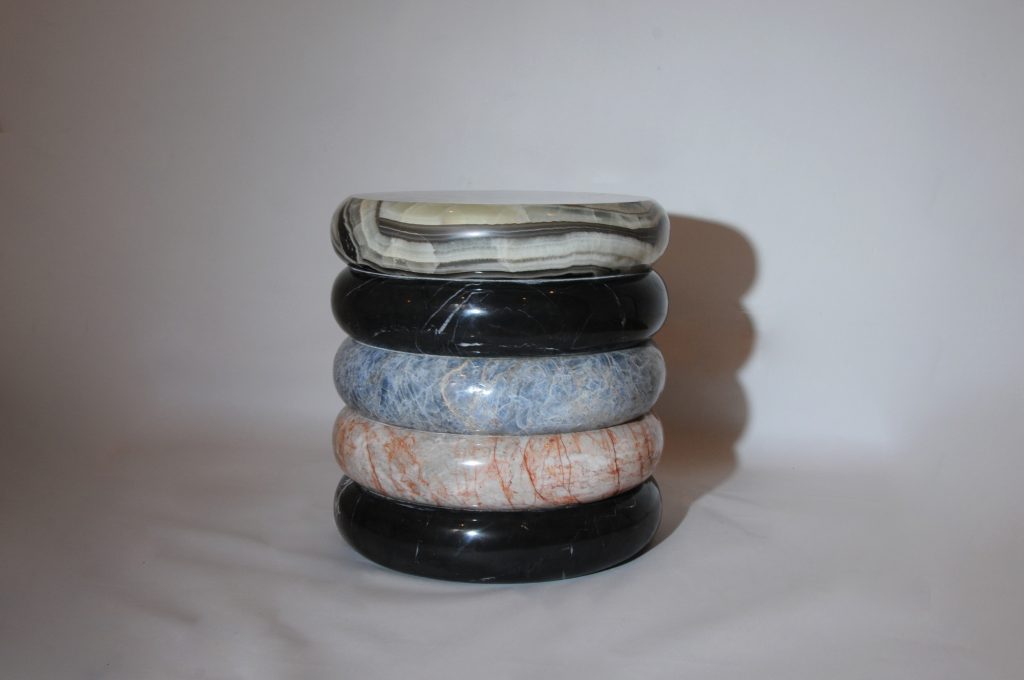

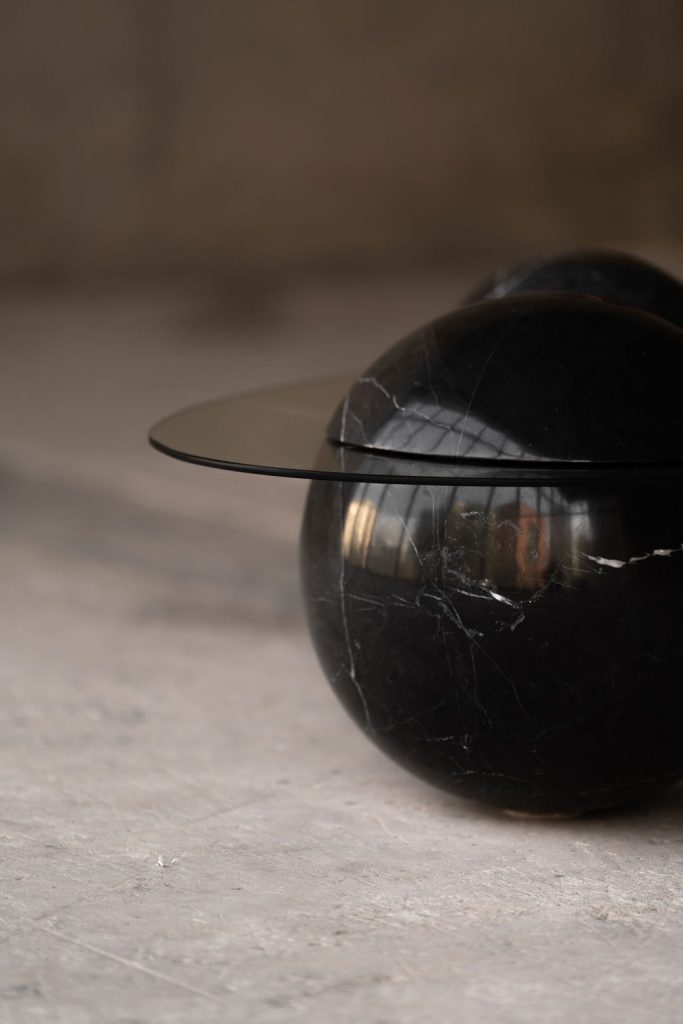

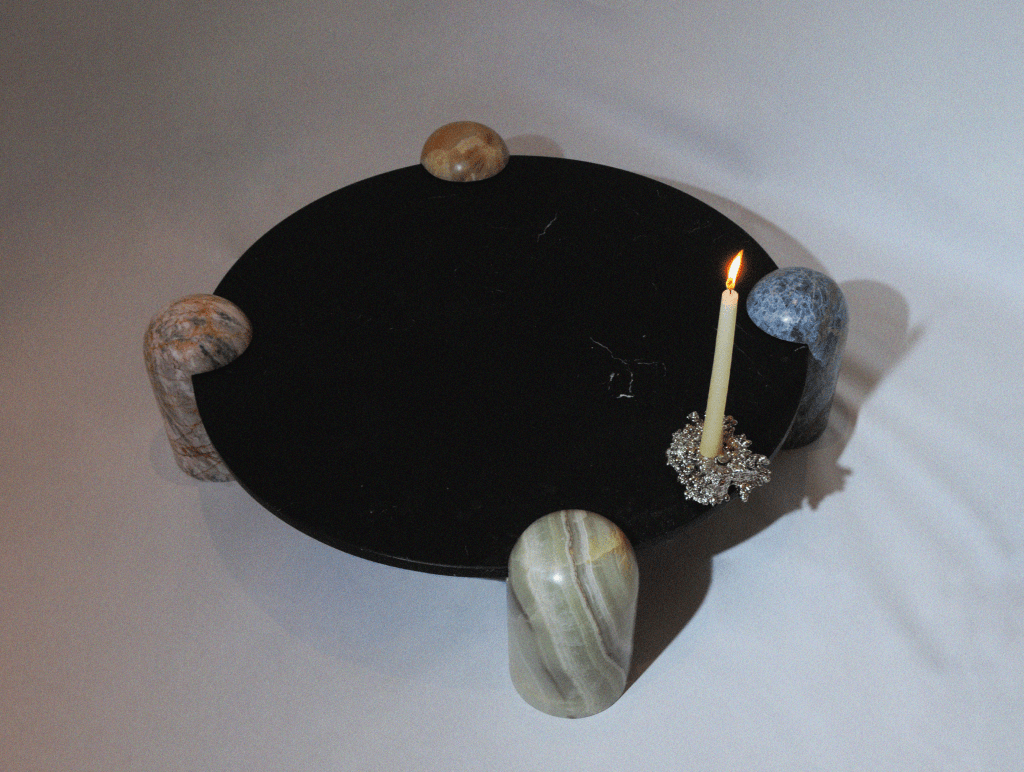



Millim Studio
Millim Studio reconceptualizes value through archaeological material engagement. Chiara Pellicano and Edoardo Giammarioli’s “Miscellaneous” collection transforms fragments carved away from other sculptures—pieces never intended to be seen—into objects of distinction. Their democratic approach rejects hierarchies between “first and second hand” marble, finding aesthetic potential in what others discard and positioning waste as opportunity rather than problem.


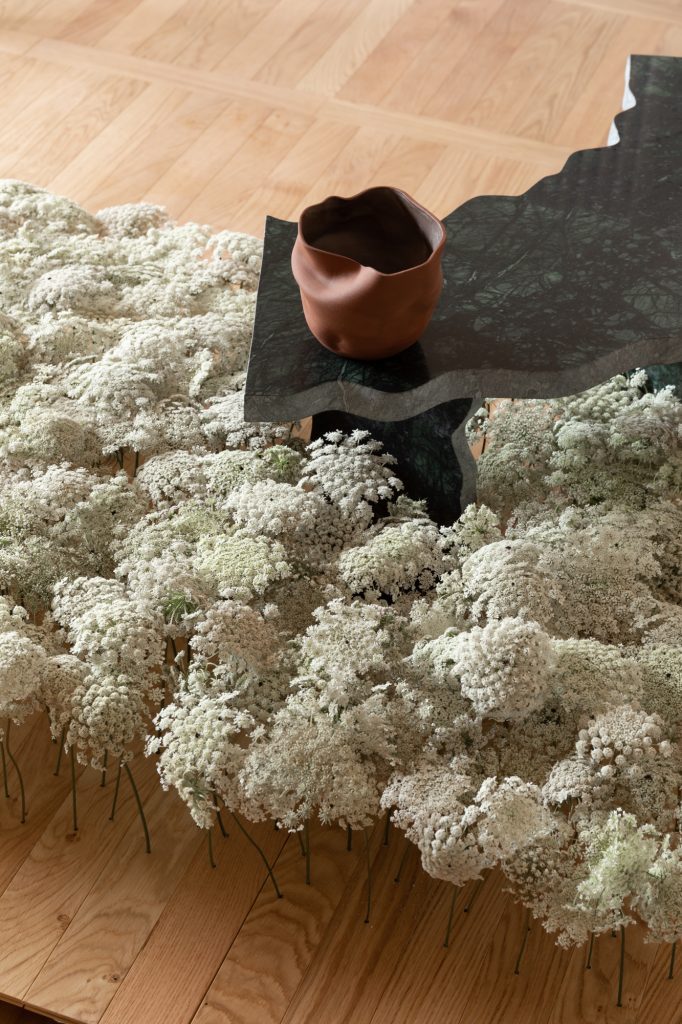

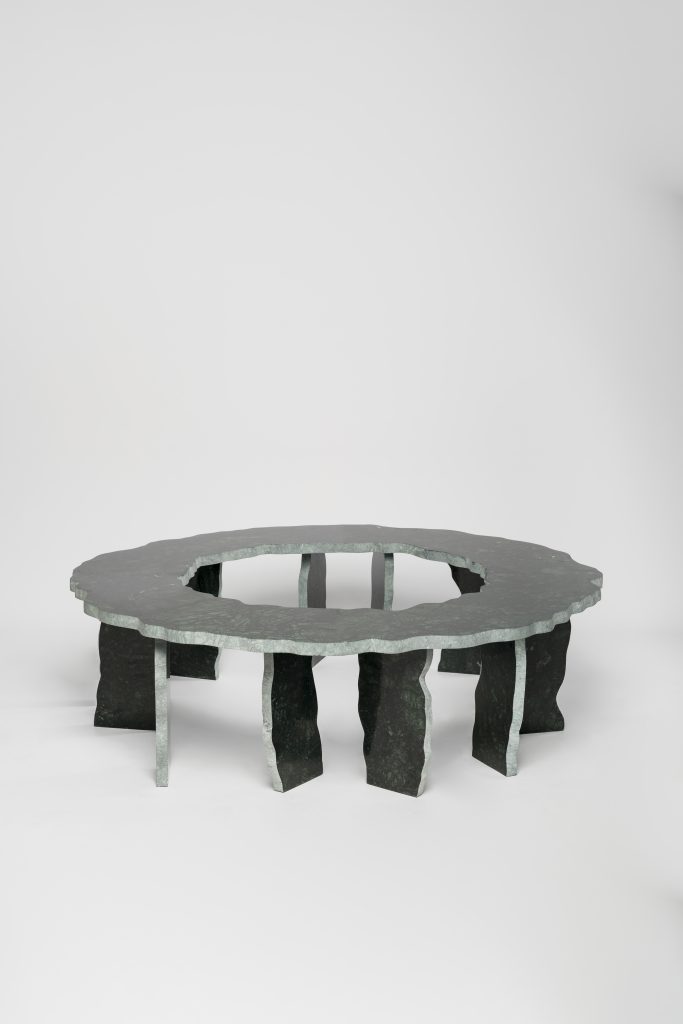

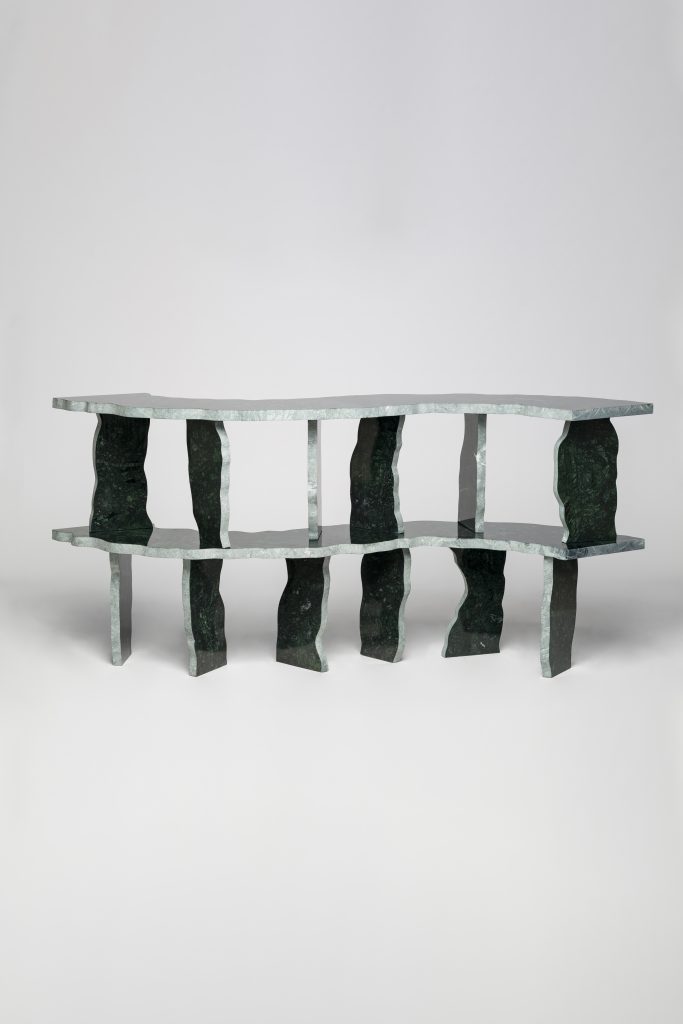

-

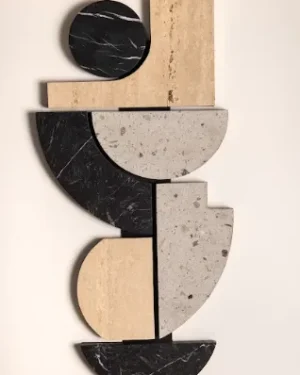 Zm Maria Sculpture
Zm Maria Sculpture -

 Ovni Uovo White Marble Glass Sculptural Coffee Table
Ovni Uovo White Marble Glass Sculptural Coffee Table -

 Impossible Relic: Alabaster
Impossible Relic: Alabaster -

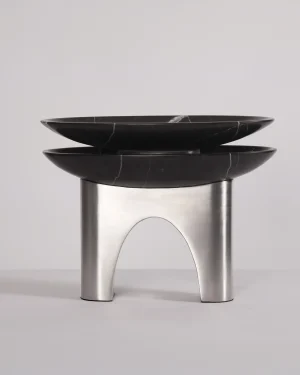 Elyx Bond
Elyx Bond -

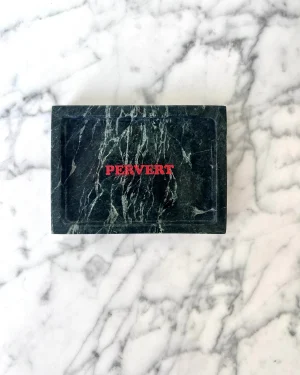 Pervert – Marble Soap Dish Green
Pervert – Marble Soap Dish Green -

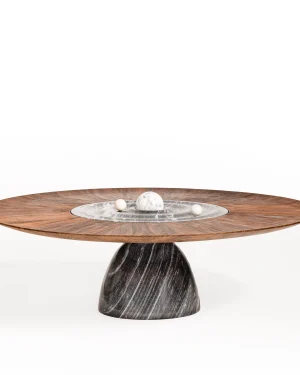 Ripple 2.0 Coffee Table
Ripple 2.0 Coffee Table -

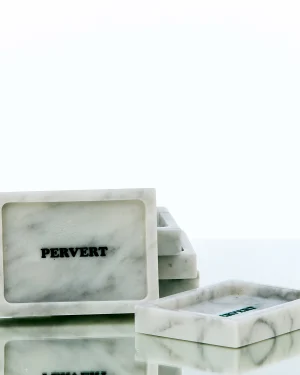 Pervert – Marble Soap Dish
Pervert – Marble Soap Dish -

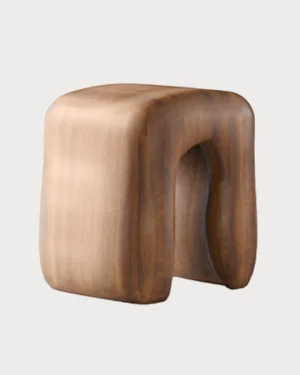 Manikin – Wooden Stool
Manikin – Wooden Stool -

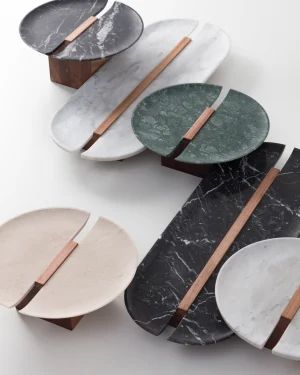 Beira Centerpiece
Beira Centerpiece -

 Manikin – Stone Stool
Manikin – Stone Stool -

 Nisus – Marble Coffee Table
Nisus – Marble Coffee Table -

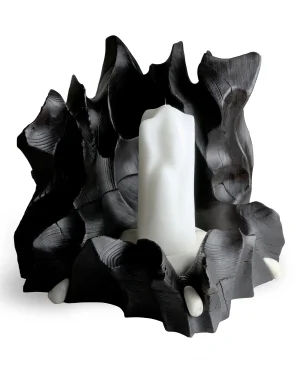 Wildrose Candle Holder
Wildrose Candle Holder -

 Testa Dei Marmi Forrest Brown – Marble Sculpture
Testa Dei Marmi Forrest Brown – Marble Sculpture -

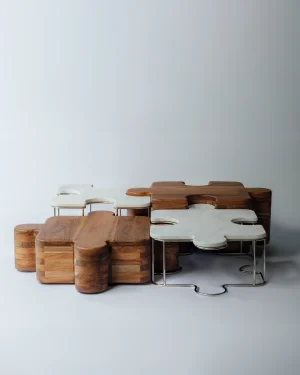 Piezas Coffee Table – Tzalam Wood No. 2
Piezas Coffee Table – Tzalam Wood No. 2 -

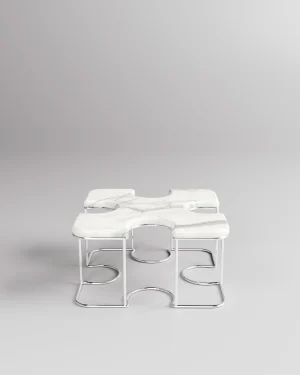 Piezas Coffee Table – Marble No. 1
Piezas Coffee Table – Marble No. 1 -

 Fl50 Floor Lamp
Fl50 Floor Lamp -

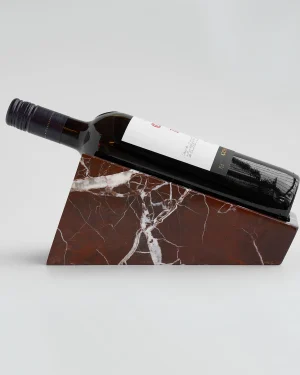 Natural Stone Wine Stands
Natural Stone Wine Stands -

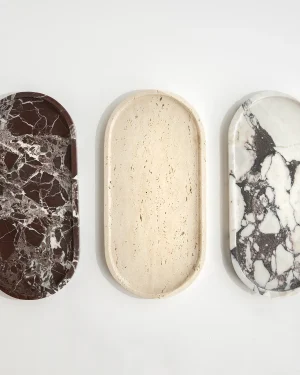 Oval Trays
Oval Trays -

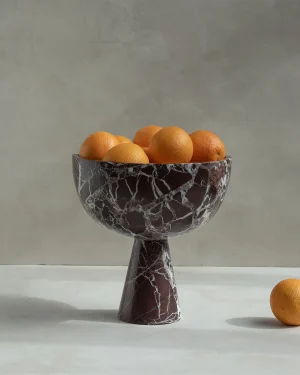 Xl Pedestal Bowls
Xl Pedestal Bowls -

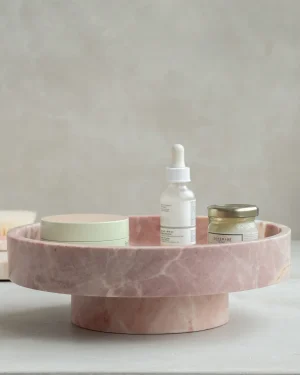 Cyclo Bowls
Cyclo Bowls
